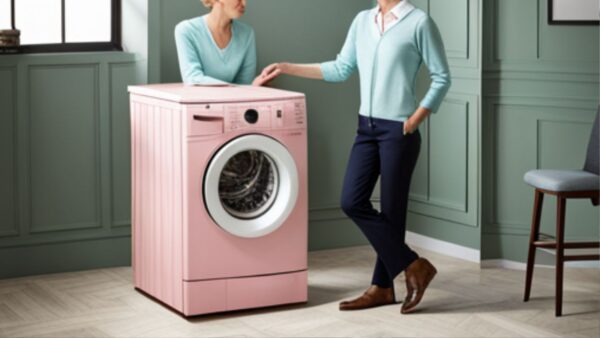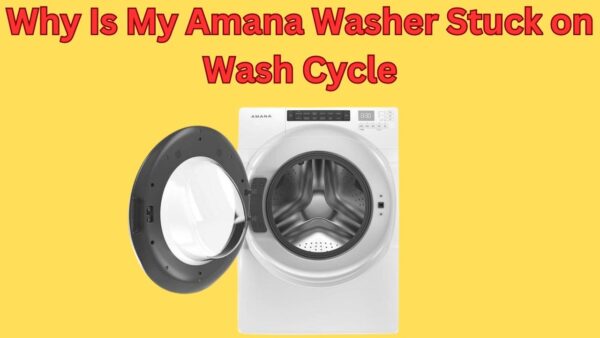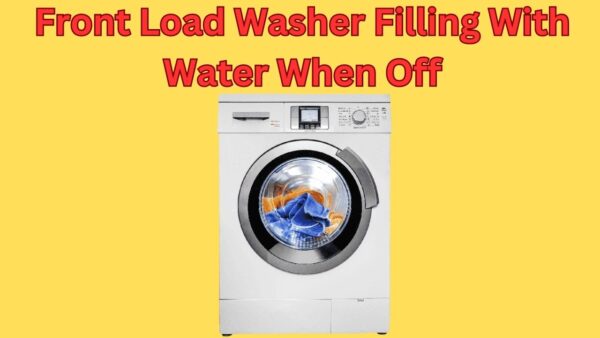Dealing with a washing machine that has a slow water flow can be both perplexing and frustrating.
A fully functional washing machine is key to maintaining a smooth flow in our daily routine, particularly when it comes to managing household chores.
This list will delve into the ten most common reasons why your washing machine may be experiencing slow water flow.
Slow Water Flow in the Washing Machine

1. Clogged Inlet Filters
Cause
Clogged inlet filters can severely hamper the water flow into your washing machine.
Over time, mineral deposits from hard water can accumulate on these filters, or they can become blocked by debris from the water pipes.
This impediment can lead to an insufficient amount of water for an effective wash cycle, forcing your machine to run slower.
The primary cause of clogged inlet filters is the accumulation of mineral deposits or other debris.
Solution
The solution to this problem is fairly straightforward: cleaning or replacing the clogged filters.
To clean them, remove the filters and soak them in a vinegar solution to dissolve the mineral buildup.
Then, rinse them well and replace them. If the filters are severely clogged or damaged, it might be necessary to replace them completely.
Regular maintenance and cleaning can prevent filter clogs and keep your washing machine running efficiently.
2. Blocked Water Valves
Cause
Blocked water valves are typically caused by the accumulation of mineral deposits or debris within the valve itself.
Over time, these substances can build up, obstruct the water flow, and cause the valve to become effectively “blocked”.
The most common minerals that cause such blockages are calcium and magnesium, often found in hard water.
Other factors can include rust from pipes or foreign bodies accidentally introduced into the plumbing system.
Solution
The solution for blocked water valves often depends on the cause of the blockage. In many cases, cleaning the valve with a commercial cleaning solution or vinegar can effectively remove mineral deposits and restore water flow.
If the valve is blocked by a foreign object, it may need to be disassembled and cleaned manually.
For severe blockages or cases where the valve is rusted or corroded, replacement of the valve may be the most effective solution.
Always remember to turn off the water supply before attempting any maintenance or repairs on a water valve.
3. Damaged Water Supply Hoses
Cause
Damaged water supply hoses are often the result of wear and tear over time.
Frequent fluctuations in water pressure, prolonged exposure to hard water, and the natural aging of the material can all contribute to the weakening of the hose.
Neglect and lack of regular maintenance can also lead to unnoticed minor damages which eventually cause a rupture.
Solution
The ideal solution to prevent water damage from faulty hoses is regular inspection and timely replacement.
Invest in high-quality water supply hoses and consider using a hose with a braided stainless steel covering for enhanced durability.
Also, consider installing an automatic shut-off mechanism to prevent substantial water damage in the event of a sudden hose burst.
Regularly check for signs of wear or damage, like kinks or leaks, and replace the hose immediately if any issues are found.
4. Malfunctioning Water Level Switch
Cause
The primary cause of a malfunctioning water level switch is often due to wear and tear over time.
Another common issue is the buildup of hard water deposits, obstructing the proper function of the switch.
Besides, electrical faults can lead to the switch failing, causing incorrect water levels in your appliance.
Solution
To rectify a malfunctioning water level switch, initially, you can attempt to clean the switch to remove any hard water deposits.
If this doesn’t fix the issue, replacing the switch may be necessary.
Lastly, consult with a professional if the problem persists to check for any potential electrical faults.
It’s best to address these problems promptly to avoid further damage to your appliance.
5. Defective Water Inlet Valve
Cause
The water inlet valve is a crucial component of any water system and, when faulty, can lead to a range of issues.
It may become defective due to natural wear and tear over time or due to the accumulation of mineral deposits, which can hinder its normal functioning.
A faulty valve usually results in problems such as water leakage, overflow, or an inability to fill the water tank.
Solution
The most effective solution to a defective water inlet valve is its replacement.
First, you’ll need to turn off the water supply and remove the defective valve. Make sure you purchase a replacement valve that matches the specifications of the old one.
Then, install the new valve according to the manufacturer’s instructions. If you lack the necessary tools or expertise, it is advisable to seek help from a professional plumber.
6. Faulty Water Pressure Switch
Cause
A Faulty Water Pressure Switch is often a result of either wear and tear over time or a sudden electrical malfunction.
These switches are designed to regulate the water pressure in your plumbing system. If they fail, you may experience either too low or too high water pressure.
Solution
The ideal solution to a faulty water pressure switch is to replace the switch completely.
It’s highly recommended to enlist the services of a professional plumber to ensure the replacement is done correctly and safely.
Remember, water and electricity are a dangerous mix, so never attempt to do this repair if you’re not qualified. Simple maintenance can also prolong the life of a pressure switch.
Regular inspections and cleaning to remove any sediment buildup can prevent many common issues.
7. Impaired Motor
Cause
The impaired motor function can result from a wide range of conditions, including neurological disorders, physical injuries, or aging.
Factors like strokes, Parkinson’s disease, or spinal cord injuries can significantly affect motor skills.
In children, developmental disorders such as cerebral palsy also play a significant role.
Solution
Addressing motor impairment often involves a multidisciplinary approach that includes physical therapy, medication, and sometimes surgery.
Physical therapy plays a central role, in helping individuals regain strength and improve coordination.
Certain medications can alleviate symptoms or slow disease progression, while surgical interventions may be suitable for conditions like spinal cord injuries or certain cases of Parkinson’s disease.
8. Inadequate Water Pressure in Supply
Cause
The primary cause of inadequate water pressure in supply can often be traced back to blocked pipes or valves.
Over time, mineral deposits accumulate in the pipes, restricting the flow of water and subsequently reducing its pressure.
Another contributing factor could be the design of the plumbing system itself, with inadequate sizing or configuration leading to pressure issues.
Solution
To remedy the problem of inadequate water pressure, it’s crucial to first identify the source of the issue.
This might involve checking the water meter or main shutoff valve to ensure they’re fully open.
A professional plumber can inspect the system for blockages or design flaws and perform necessary repairs or adjustments.
Furthermore, installing a pressure booster could be a viable solution for homes with chronically low water pressure.
9. Obstructed Drain Hose
Cause
An obstructed drain hose often results from the accumulation of dirt, debris, or small objects in the hose, disrupting the water flow.
This obstruction may cause the appliance to malfunction or not drain properly.
This issue is common in appliances such as washing machines and dishwashers.
The problem can also escalate over time if not addressed promptly, leading to more serious complications.
Solution
To fix an obstructed drain hose, it’s advisable to first unplug the appliance to ensure safety.
Next, locate the hose, usually at the back of the appliance, and disconnect it. Use a long, flexible brush to gently remove any obstruction inside the hose.
Rinse the hose with warm water to ensure it is thoroughly cleaned. After cleaning, reattach the hose to the appliance and ensure it’s properly secured.
Always remember to check the hose regularly to prevent future obstructions.
10. Failed Timer Control
Cause
The failure of timer control in any system can be attributed to several factors.
It could be due to software glitches, physical damage to the timing components, or even interference from other electrical or electronic devices.
Software problems might include bugs in the code or issues with the timer settings.
Physical damage can result from mishandling, exposure to heat or moisture, or wear and tear over time. Interference can be caused by nearby devices that emit electromagnetic waves.
Solution
Troubleshooting the “Failed Timer Control” issue involves a systematic approach. Firstly, inspect the physical components for any visible damage or anomalies.
If there are no physical issues, proceed to check the software. Ensure that the timer settings are correct and that the latest software updates are installed.
If the problem persists, consider the possibility of electromagnetic interference.
Keep the timer away from devices that might cause such interference. If the issue remains unresolved, seek professional assistance.
Conclusion
Our exploration underscores the transformative potential of integrating technology into education, outdoor activities, and other facets of our lives.
It’s clear that the benefits extend far beyond convenience, fostering a more inclusive, dynamic, and holistic approach to learning and living.
We must, however, navigate this terrain with care, ensuring that we balance technological advances with societal needs and environmental sustainability.
As we move forward, let’s continue to harness the power of these tools and technologies, while never losing sight of our human values and connections.
FAQs
Why is the water flowing slowly in my washing machine?
The water flow may be slow due to a clogged filter or a kinked water hose.
How do I increase the water pressure in my washing machine?
Increasing water pressure can be achieved by clearing any obstructions in the water hoses or adjusting the water valve.
How do I check the water flow in my washing machine?
You can check the water flow by observing the filling speed of the drum during a wash cycle.
Indesit Washing Machine All Lights Flashing
Washer Slowly Fills With Water When Not in Use
Indesit Washing Machine Door Lock Light On
Indesit IWDE126 Door Wont Open
How to Remove Rotten Egg Smell From Washing Machine
Why Is My Washing Machine Pausing
Whirlpool Washer Sensing Light Flashing
Kenmore Washing Machine Not Draining
Washing Machine Drainage Options
Kenmore Washing Machine Not Agitating


Name: Joseph Title: Owner and Founder Website: myappliancegeek.com
Biographical Info:
Joseph, the creative mind and founder behind myappliancegeek.com is a distinguished expert in the field of home appliances and technology.
Education: Joseph holds a prestigious degree in Appliance Engineering from a renowned institution in the United States, [Stanford University], where he gained a profound understanding of appliance design, mechanics, and technology.
Professional Experience: Joseph’s professional journey spans over [18 ] years in the home appliance industry. His extensive experience includes working with industry-leading appliance manufacturers, prominent retailers, and appliance repair services.
Entrepreneurship: In [2000], Joseph founded myappliancegeek.com, a platform dedicated to providing comprehensive information, advice, and solutions for those seeking guidance in the world of appliances.
Passion for Appliances: Joseph’s unwavering passion for home appliances stems from his belief in their pivotal role in improving our quality of life.
Contributions to the Industry: Joseph’s commitment to the home appliance industry is evident through his extensive writing and speaking engagements.
Community Involvement: Joseph is not only an online presence but also an active member of the community, frequently engaging in outreach programs, local workshops, and charitable initiatives.


